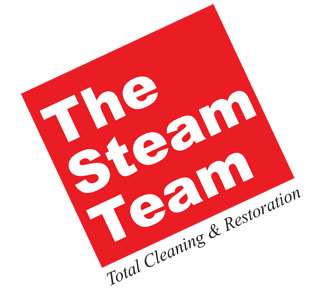Restoring Your Home in Austin, Texas: The Imperative After an Insurance Claim
/Restoration services contractor
Subtitle: Navigating the Path to Renewal, Resilience, and Homecoming
In the sprawling landscape of Austin, Texas, where the vibrant city meets the serenity of the Hill Country, homes are not just structures; they are sanctuaries, repositories of memories, and the very essence of personal identity. When the unexpected strikes, be it in the form of natural disasters, accidents, or unforeseen events, the aftermath often necessitates an insurance claim. However, the journey doesn't end with the claim approval; it marks the beginning of a crucial chapter—restoration. This narrative explores the myriad reasons why restoring your home after an insurance claim in Austin is not just a process but a vital investment in the well-being of both your property and your sense of belonging.
Preserving the Fabric of Austin Living:
Austin, a city known for its eclectic neighborhoods, historical districts, and modern developments, is a tapestry of architectural diversity. Restoring your home after an insurance claim is an integral part of preserving this fabric of Austin living. It's about maintaining the unique character and charm that defines Austin's neighborhoods, ensuring that each home contributes to the visual harmony that makes the city a distinct and cherished place to call home.
Mitigating Long-Term Damage:
In the wake of an unfortunate event, whether it be a flood, fire, or structural damage, immediate restoration is crucial to mitigate long-term damage. Austin's climate, with its warm temperatures and occasional heavy rains, can exacerbate the impact of water damage if not addressed promptly. Restoration helps prevent issues like mold growth, structural decay, and compromised indoor air quality, safeguarding the long-term health of your home.
Protecting Property Values:
Austin's real estate market has witnessed steady growth, making property values a significant consideration for homeowners. Timely and thorough restoration post an insurance claim is a strategic move to protect and potentially enhance your property's value. A well-maintained and restored home not only safeguards your investment but also contributes to the overall stability and desirability of Austin's real estate market.
Ensuring Structural Integrity:
Beyond aesthetics, the structural integrity of your home is paramount. Post-claim restoration addresses structural issues, ensuring that the core components of your home—from the foundation to the roof—are sound and secure. This is particularly critical in a city like Austin, where a diverse range of architectural styles demands tailored restoration approaches to maintain the integrity of each unique structure.
Navigating Austin's Eclectic Architecture:
Austin's charm lies in its eclectic blend of historic homes, modern residences, and quirky architectural gems. Post-insurance claim restoration involves navigating this diversity with precision. Whether restoring a Victorian-era home in Hyde Park, a mid-century modern gem in Tarrytown, or a contemporary dwelling in the Mueller Development, the restoration process is tailored to the specific architectural nuances of each property.
Fostering a Sense of Community Resilience:
Austin is a community that values resilience, camaraderie, and neighborly support. By restoring your home after an insurance claim, you contribute to the broader narrative of community resilience. The collective effort to rebuild and restore creates a sense of unity, reinforcing the idea that Austin is not just a city of homes but a community of individuals invested in each other's well-being.
Addressing Environmental Considerations:
Austin's commitment to environmental sustainability is evident in various community initiatives. Restoration post-insurance claim aligns with these values by addressing environmental considerations. Salvaging materials, utilizing eco-friendly restoration practices, and minimizing waste contribute to Austin's larger commitment to being a green and sustainable city.
Promoting Personal Well-Being:
Your home is more than a collection of walls and roofs; it is a haven for personal well-being. The psychological impact of living in a space that has been restored, rejuvenated, and brought back to life after adversity is profound. Restoring your home is an investment in your mental and emotional health, creating an environment that fosters a sense of safety, comfort, and renewal.
Navigating the Challenges of Austin's Climate:
Austin's climate, characterized by hot summers and occasional severe weather events, presents unique challenges for homeowners. Restoration is not just about cosmetic repairs; it's about fortifying your home against the climatic elements. From reinforcing roofs to ensuring proper insulation, the restoration process is tailored to navigate the challenges posed by Austin's dynamic climate.
Honoring Austin's Rich Cultural Heritage:
Austin is a city with a rich cultural heritage, reflected in its music, art, and architecture. Restoring your home post-insurance claim is a way of honoring this heritage. It's about ensuring that your home remains a piece of the cultural mosaic that makes Austin a vibrant and cherished community.
Navigating Insurance Regulations:
Restoration after an insurance claim involves navigating the intricacies of insurance regulations. Austin's homeowners must adhere to specific guidelines and timelines outlined by insurance policies. Professional restoration services in Austin understand these regulations, ensuring that the restoration and remediation contractors process aligns with insurance requirements and maximizes the benefits of the claim.
Facilitating a Seamless Return:
Perhaps most importantly, restoring your home after an insurance claim in Austin is about facilitating a seamless return to normalcy. It's about reclaiming your space, rebuilding your life, and rediscovering the comfort of home. Austin's residents, known for their resilience and vibrant spirit, understand the importance of restoring not just buildings but the sense of belonging that homes provide.
Conclusion: A Restoration Symphony in the Heart of Austin:
In Austin, where the spirit of innovation meets the warmth of community, restoring your home after an insurance claim is a transformative journey. It's a symphony of renewal, a testament to the resilience of both homeowners and the city itself. From the historic neighborhoods to the contemporary developments, the restoration process in Austin is not just about repairing structures; it's about revitalizing the very essence of home. In the heart of Texas, where the sounds of live music echo through the streets and the culture thrives, restoring your home is not just a practical step—it's an ode to the enduring spirit of Austin, a city that rises, restores, and embraces the beauty of renewal.











